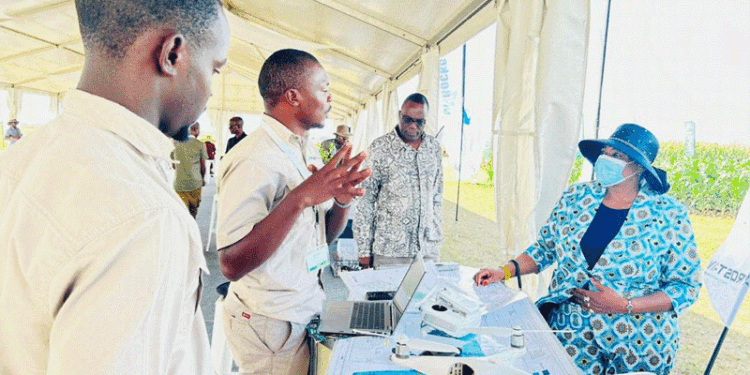OFFICIAL data shows that Zimbabwe’s exports to Zambia have been on a growth trajectory.
For instance, they grew by 89%, from US$75 million in 2018 to US$142 million in 2023.
In January this year, exports to Zambia rose by 50%, from US$7,1 million to US$10,7 million.
Zimbabwe has been exporting mineral fuels, iron and steel products and articles of paper, to Zambia while importing cereals, beverages and ceramic products from its neighbour.
Although Zimbabwe has been recording growth in exports to Zambia, there are many untapped export opportunities in the market.
These include sectors in processed foods, clothing and textiles, protective clothing, agriculture, mining, construction and engineering, and services.
To ensure local businesses take optimum advantage of these opportunities, ZimTrade, the country’s trade development and promotion organisation, last week facilitated the participation of exporters at Agritech Expo, a premier event in Zambia for showcasing the latest agricultural technology, products and services.
Nine companies took place at the expo, which ran from April 18 to 20.
The expo brought together suppliers and farmers of all scales to showcase products and educate customers on new methods and services available in the market.
This year’s edition of the expo attracted over 200 exhibitors and 20 000 agricultural business visitors from countries in Africa, Europe and the Middle East.
The products exhibited included farm equipment, combine harvesters, garden equipment, landscaping, seeds, plants, net shading, poultry, fish farming, cut flowers, fertilisers, dairy, canning and processing, composting equipment, crop production and other related products.
Agricultural inputs and implements, according to ZimTrade, present lucrative export opportunities for local manufacturers.
According to the TradeMap, exports of agricultural inputs and implements grew to US$828 billion in 2022 from US$606 billion in 2019.
In Zimbabwe, agricultural inputs and implements exports increased by 15% from US$1,8 million in January 2023 to US$2,1 million during the same period in 2024
Companies that participated at the Agritech Expo expressed optimism of tapping into the Zambian market, with a population of more than 20 million people.
“We had a lot of enquiries coming through. We also had a lot of deals coming. It has been a good experience for us,” Mealie Brand senior marketing officer Tatenda Mutonhodza said.
Humuson Complex head of operations Zambia, Rumbidzayi Sewera said: “We witnessed a very overwhelming turnout of mixed small scale and commercial farmers, all in one place.
“We had several meetings we have set up for follow up. We are seeing that we are going to get a lot of deals.”
Afrostain Farmtech agribusiness consultant Onward Maruma said the Zambian market was promising to be good for their products.
“There is a potential for partnerships, there is a potential for individual clients, there is a potential for working with different companies in delivering our services,” he said.
AgriRocket Engineering chief executive officer Chamunorwa Kapita said: “We have noted that our products are in high demand in Zambia.
“So we are looking to complete and close deals with customers that have been coming to our stand.”
William Bain & Company production manager Prince Kahari said the show was a success, adding that they had many customers coming in.
“We want to introduce the Bain brand to the Zambian market,” he noted.
Dazzy Munyati said she managed to connect with smallholder and commercial farmers, some of them who are into floriculture and looking to start exporting to the European Union.
“So, I will be working with them,” she said.
ZimTrade export promotion officer Alex Mutandi said participation at such expos help to boost Zimbabwe’s exports.
“The main idea is to diversify our products range that we are exporting to Zambia with particular emphasis on the agricultural value chain products,” Mutandi told Standardbusiness.
“These products include agricultural inputs such as seeds, chemicals and implements.
“So the whole idea of participating at this expo is to show that we diversity our exports of agricultural inputs and implements into Zambia and grow that range.”
He added: “Traditionally, we have been selling more of our fast-moving consumer goods into this market, but our main focus will be on increasing the trade and exports of the agricultural implements and inputs into Zambia.
“There is a lot of opportunities in this market.
“There is a lot of agricultural growth for the past 10 years in Zambia, hence we are trying to ensure that we support the agricultural sector with products from Zimbabwe, so that the farmers can also increase their yields.”
Mutandi said there was a lot of traction coming from the small scale farmers, who were interested in Zimbabwean products.
Zimbabwe’s ambassador to Zambia, Charity Charamba (pictured) pledged to continue supporting local companies to access the Zambian market.
“The products that are here can boost our trade relations between our two countries,” Charamba said.
“In terms of bilateral trade relations, Zambia is our largest partner in Comesa and fourth largest partner under Sadc, but the balance of trade is actually in favour of Zambia, meaning we need to bridge that gap.
“If we have more of these companies that come to set up business here, we will definitely offset that trade deficit in our favour.”
She added: “I was quite impressed by the number of companies that have come to exhibit at the Agritech Expo.
“Looking at the products that are here, they are quite impressive that we have those that are tailor-made for small scale farmers and that can be a breakthrough here in Zambia where our products are quite durable and user friendly to small scale farmers.”
Exporting not only serves as a catalyst for economic growth and job creation, but also enhances the competitiveness of domestic industries in the global marketplace.
By venturing into international markets, institutions can diversify their revenue streams, mitigate the risks associated with overdependence on domestic markets, and capitalise on new growth opportunities.
Source Zimbabwe Situation










